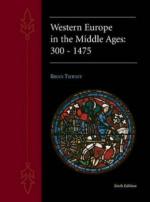|
This section contains 761 words (approx. 3 pages at 300 words per page) |

|
Animals, Plants, and Minerals. An investigation of the medieval study of nature provides an interesting glimpse into how scientists of the period organized their knowledge and why they undertook their study. In some cases their investigations were academic, while in others they were seeking to elaborate and explain scripture, and in still others they had extremely practical goals. To document their studies they produced manuscript herbals, which illustrate plants and their medicinal properties; lapidaries, which show stones and their physical, magical, emblematic, or medicinal qualities; and bestiaries, which depict animals and describe their habits. In all these manuscripts mythical lore, Christian tradition, travelers' tales, workmen's knowledge of their crafts, and direct observations might mingle and intertwine to produce, in some cases, encyclopedic descriptions of the natural world.
Albertus Magnus. One of the most proficient and prolific medieval natural scientists was Albertus Magnus...
|
This section contains 761 words (approx. 3 pages at 300 words per page) |

|




